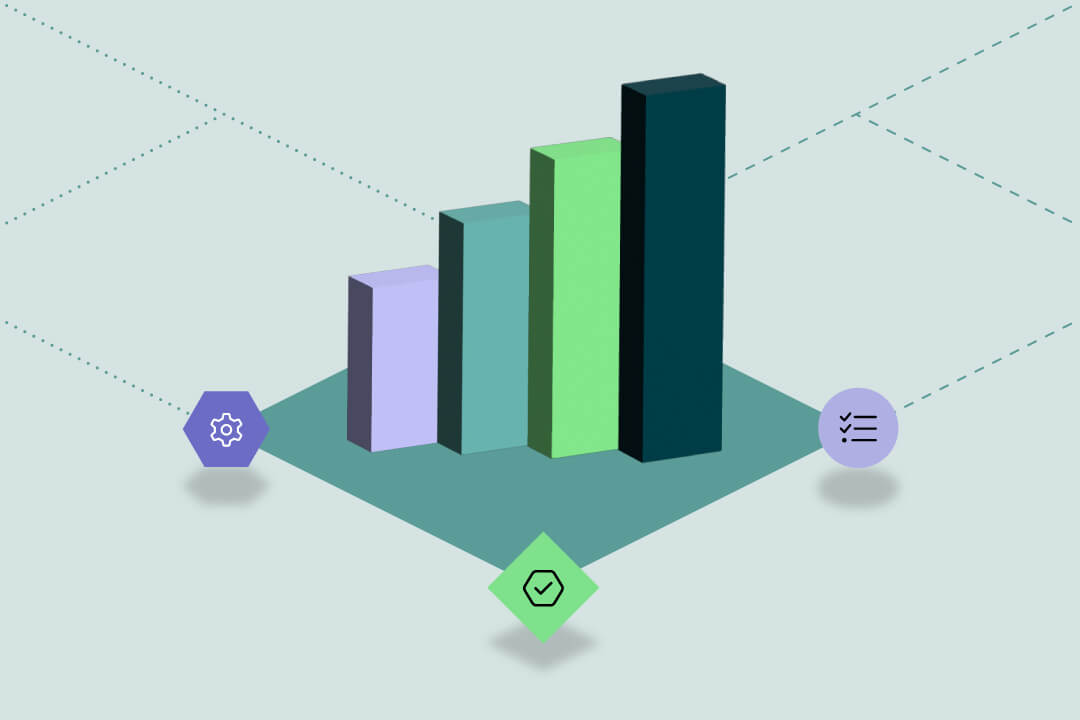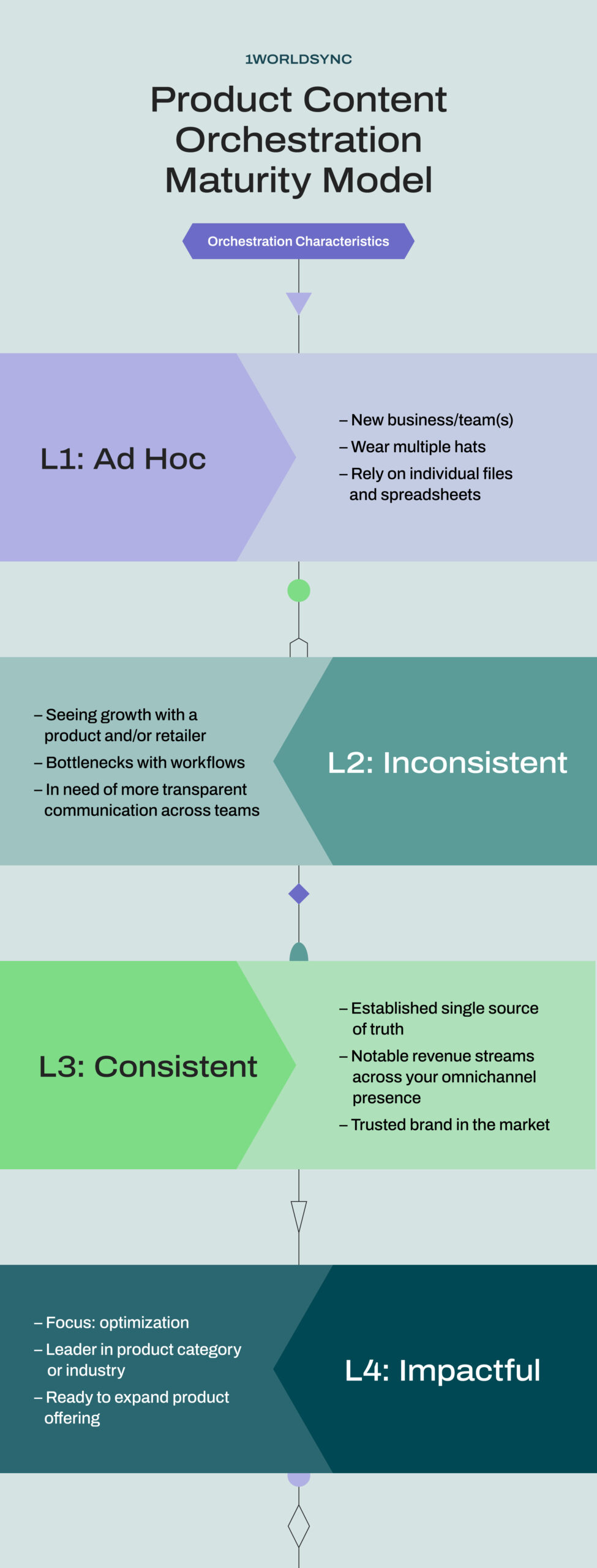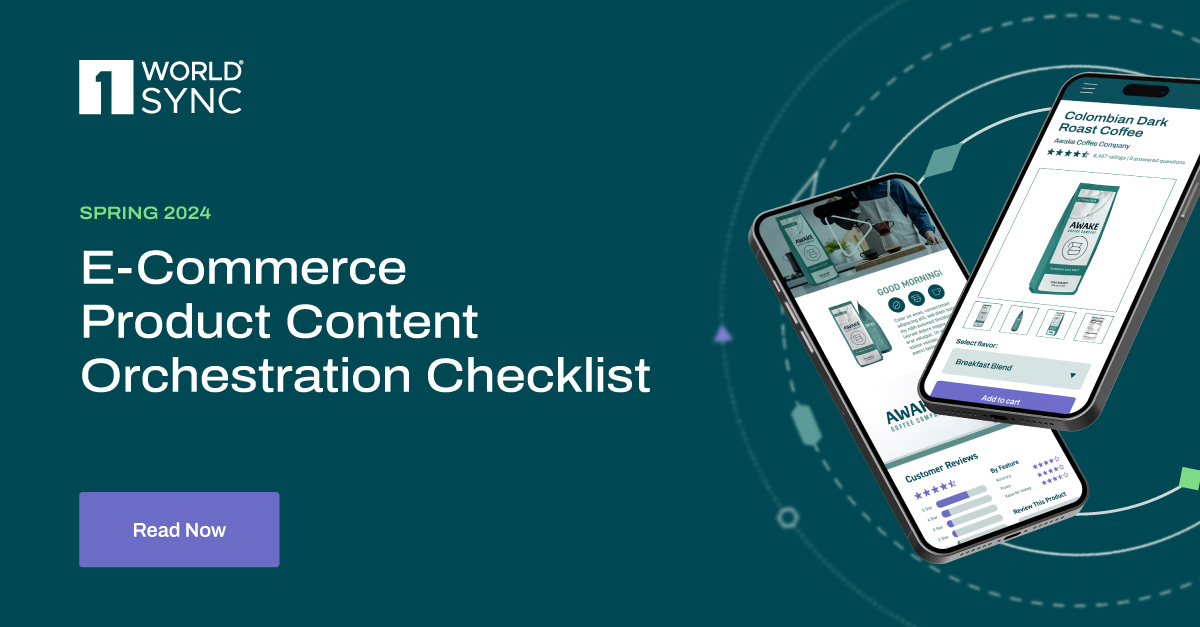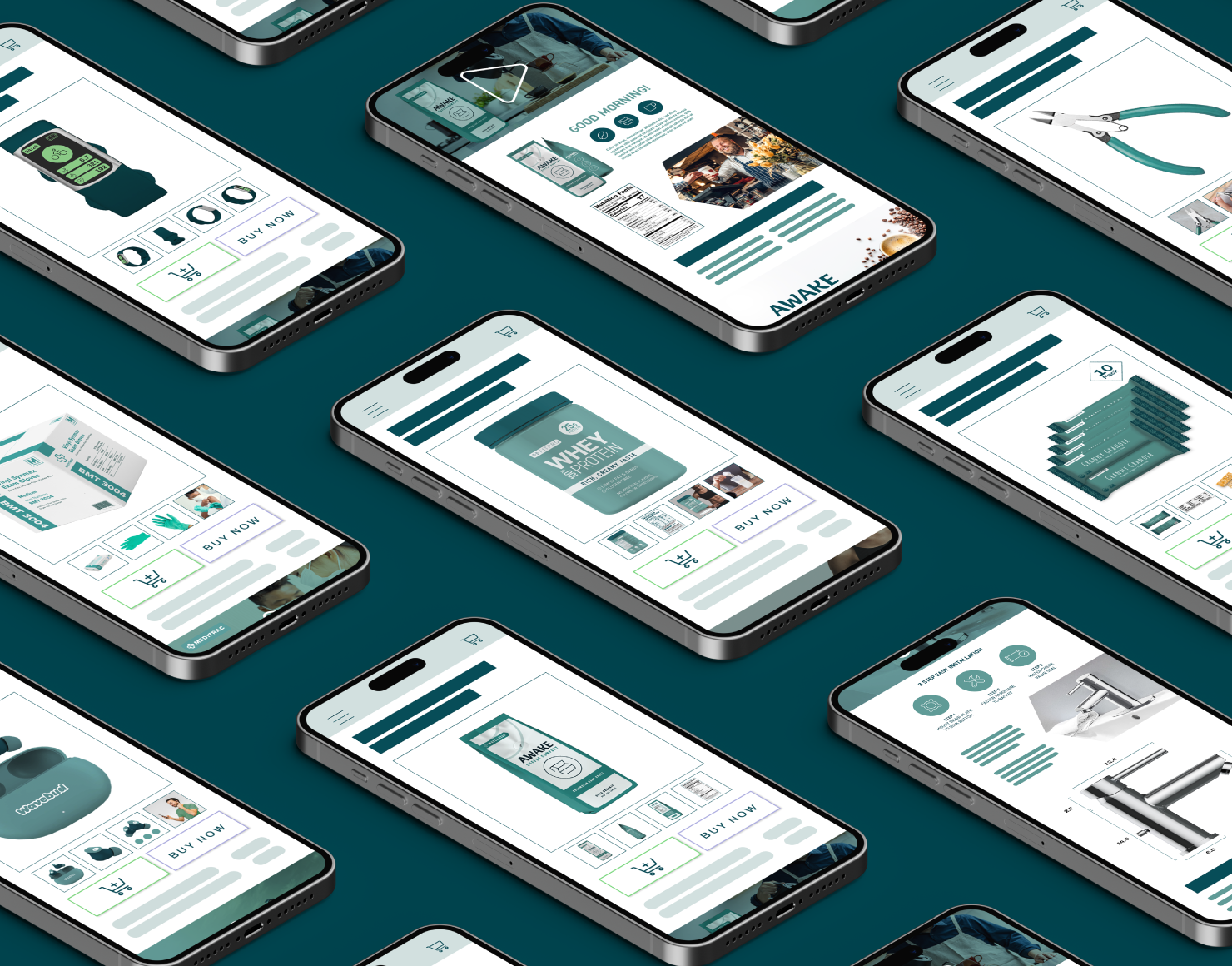Why Product Content Orchestration is the Key Element of Your Omnichannel Commerce Strategy
July 12, 2023

Why Product Content Orchestration is the Key Element of Your Omnichannel Commerce Strategy

The growth of the omnichannel commerce landscape has led to increased obstacles for brands, retailers and distributors.
As the variety of shopping channels and expectations of consumers expand, we surveyed commerce professionals in a variety of industries and job functions, asking them to sum up the state of product content management in a simple question. One rose to the top: 70% of brands and retailers are asking, “How do we make sure our content is always accurate, consistent and relevant across every channel in a fast-moving market?”
As Todd Hassenfelt, Colgate-Palmolive’s eCommerce Director of Growth Strategy & Planning, told us: “Omnichannel commerce is incredibly complex, and the number of vendors and tools to manage the content that powers it is a major challenge.”
Content and data disharmony is common and has a material impact on commerce. The consequences of this disharmony can significantly impact a brand, retailer or distributor’s sales growth. When product content is inconsistent and/or inaccurate, it leads to delayed time to market, missed sales opportunities, siloed processes and increased returns. In some cases, it can lead to fines imposed on brands by retailers and distributors.
This is why product content orchestration is crucial in the omnichannel landscape.
Defining Product Content Orchestration
Product content orchestration is the harmonization of the people, systems and product assets required to sell successfully across every channel. When product content is orchestrated comprehensively, a brand ensures that every step of its product content journey is efficient, accurate and relevant.
Product Content Orchestration Maturity
In order to understand how your product content is currently orchestrated, 1WorldSync developed a simple evaluation tool. The Product Content Orchestration Maturity Model doesn’t account for just the quality of your product content, but the way in which it’s harmonized across your organization and distribution channels. This is a crucial point. On a daily basis, we talk to many brands who are able to create engaging, relevant product content – from compelling imagery to persuasive feature descriptions and multimedia experiences – but fail to ensure its consistency across internal systems and sales channels. Put another way: Product content can look and sound good, but that doesn’t make it impactful.
Take a look below to determine where you fall in the model.
If you’re not at Level 4 (L4) quite yet, don’t fret. During a recent live event, we polled over 200 commerce professionals representing brands and retailers on where they’d rank themselves. 81% said either Ad Hoc or Inconsistent.
From Ad Hoc all the way through Impactful, there are various factors that determine your product content orchestration maturity. The goal is for a company to master their orchestration by ensuring that all product content is consistent, accurate and impactful everywhere commerce happens. This feat, shown in Level 4 of the model, is achieved by focusing on optimization and a prioritization of performance and analytics, but only after teams have ensured consistent management and synchronization of their omnichannel content. In comparison to Level 1, which contains many manual processes for content creation, cross-functional silos and duplicative costs, brands, retailers and distributors at Level 4 reflect a commitment to collaboration, consistency and efficiency.
To learn more about Product Content Orchestration Maturity, we recommend checking out this recent webinar with 1WorldSync’s Randy Mercer, Chief Product Officer, who summarized the model.
Below, we break down each level further.
Level 1: Ad Hoc
This is where organizations often start their product content journey. In Level 1, brand operations are siloed, product content costs are duplicative and individual team members are responsible for many, if not all, product content needs. This approach leads to long lead times, missed opportunities and frustration. Oftentimes, the quality and thoroughness of product content assets such as imagery and item attributes vary drastically between SKUs or e-commerce platforms, making it difficult to leave consumers with a holistic, lasting brand impression.
Orchestration Next Steps:
- Assess where your teams’ time is most spent in the product content lifecycle
- Consider solutions and technologies for automating content creation and updates
Level 2: Inconsistent
The second level is where brands often fall when they start to prioritize product content but still struggle with workflow. This level is indicative of bottlenecks, manual processes and discrepancies across teams. While growth is possible at Level 2, it’s not the optimal approach for product content success. This can occur at enterprise and SMB organizations alike. Brands managing hundreds or thousands of SKUs are especially susceptible to siloes, while upstart brands may struggle to scale their processes to support growth.
Orchestration Next Steps:
- Assess the distribution end-points (e.g., trading partners, channels) or organizational bottlenecks that cause the most friction
- Adopt retailer attribute style guides through playlists to ensure your content meets specific requirements for trading partners
- Implement a product information management (PIM) system to streamline workflows and improve content orchestration across your organization
Level 3: Consistent
Level 3 is when product content processes start to smooth out. Organizations at Level 3 have established a single source of truth, often a PIM system, that ensures accuracy and consistency of product content without manual work for their team. This streamlined workflow leads to growth in the market and helps brands establish themselves as a trusted option for consumers.
Orchestration Next Steps:
- Assess the channels that will help your organization expand its reach and identify the gaps in your tech stack preventing growth
- Adopt product content tools – such as modern product catalogs for sales that are in sync with your item data in real time
- Adopt rich content creation and delivery tools that enable consistent, engaging product content across your ecommerce product detail pages
Level 4: Impactful
The final level in this product content orchestration maturity model is the North Star for brands. Level 4 is when organizations master product content harmony and focus on optimization. With an emphasis on continuous improvement, Level 4 brands are always expanding and improving their content flows and product offerings.
Orchestration Next Steps:
- Assess your ability to analyze and optimize the success of your product content
- Adopt business intelligence tools and sales optimization tech that lead to growth actions, such as retail e-commerce analytics tools or product bundling and cross-sell solutions
Understanding your product content orchestration maturity level gives you the opportunity to level up. With a robust suite of solutions, 1WorldSync can take you from Level 1 to Level 4 and take the work off your plate.
Orchestrate Your Product Content with 1WorldSync
In order to master product content orchestration, brands must rely on a single source of truth and a suite of solutions that allow their teams to focus on what they do best; creating and selling their products. 1WorldSync, as the leader of product content orchestration, offers every solution a brand needs to reach product content harmony.
1WorldSync’s leadership in product content orchestration is demonstrated every day via our platform and our people. We encourage you to tour our solutions, which help more than 17,000 brands, retailers and distributors achieve these essential product content needs:
- Create and distribute content
- Capture high-quality product imagery
- Syndicate product content to trading partners
- Create and source high-conversion content for e-commerce stores
- Receive validated, relevant content from suppliers
- Implement a standards-driven PIM system
To get started orchestrating your product content, reach out to the 1WorldSync team today.






